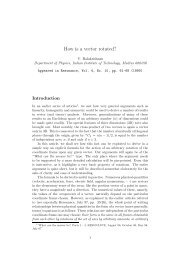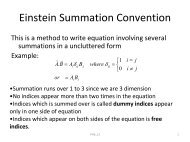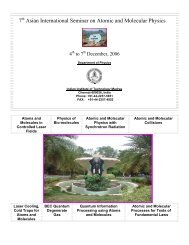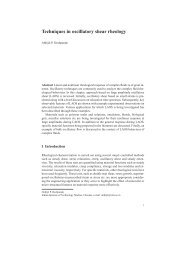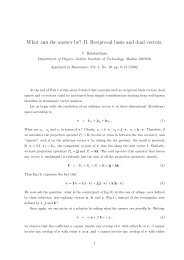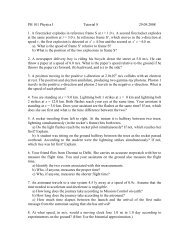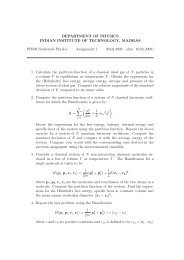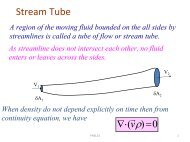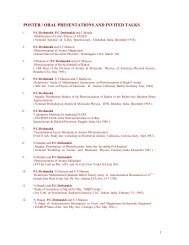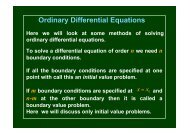Symmetry Principles and Conservation Laws in Atomic and ...
Symmetry Principles and Conservation Laws in Atomic and ...
Symmetry Principles and Conservation Laws in Atomic and ...
You also want an ePaper? Increase the reach of your titles
YUMPU automatically turns print PDFs into web optimized ePapers that Google loves.
GENERAL ARTICLEacceleration. Newton's second law conta<strong>in</strong>s the heartof this stimulus{response relation, expressed as a di®erentialequation. It is <strong>in</strong>terest<strong>in</strong>g that laws of classicalmechanics can be built alternatively on the basis of an`<strong>in</strong>tegral pr<strong>in</strong>ciple', namely the `pr<strong>in</strong>ciple of variation',discussed <strong>in</strong> the next section.3. Pr<strong>in</strong>ciple of VariationThe connection between symmetry <strong>and</strong> conservation lawsbecomes even more transparent <strong>in</strong> the alternative formalismof classical mechanics, namely the Lagrangian/Hamiltonian formulation. It is <strong>in</strong>structive to ¯rst seethat this alternative formalism is based not on the l<strong>in</strong>earresponse relationship embodied <strong>in</strong> the Newtonian pr<strong>in</strong>cipleof causality, but <strong>in</strong> a completely di®erent approach,namely the `pr<strong>in</strong>ciple of variation'.It is <strong>in</strong>terest<strong>in</strong>g thatlaws of classicalmechanics can bebuilt alternativelyon the basis of an‘<strong>in</strong>tegral pr<strong>in</strong>ciple’,namely the‘pr<strong>in</strong>ciple ofvariation’,Newtonian mechanics o®ers an accurate description ofclassical motion by account<strong>in</strong>g for the same by the `cause<strong>and</strong> e®ect' relationship. An alternative <strong>and</strong> equivalentdescription makes it redundant to <strong>in</strong>voke such a causaldescription. This alternative description dispenses theNewtonian notion of the 'cause-e®ect' relationship, <strong>and</strong><strong>in</strong>stead of it <strong>in</strong>vokes a variational pr<strong>in</strong>ciple, namely, thatthe `action <strong>in</strong>tegral' is an extremum. Those who are usedto th<strong>in</strong>k<strong>in</strong>g <strong>in</strong> terms of the Newtonian formulation alonewould ¯nd it strange that one gets equivalent descriptionof classical mechanics without <strong>in</strong>vok<strong>in</strong>g the notion offorce at all!Let us ¯rst state the pr<strong>in</strong>ciple of extremum action. Webeg<strong>in</strong> on common ground with the Newtonian formulation,namely that the position q <strong>and</strong> velocity : q specifythe mechanical state of a system. A well-de¯ned functionof q <strong>and</strong> : q would also then specify the mechanicalstate of the system. What is known as the Lagrangian ofa system L(q; : q) is just that; it is named after its orig<strong>in</strong>atorLagrange (1736{1813). Furthermore, <strong>in</strong> a homoge-RESONANCE September 2010835



